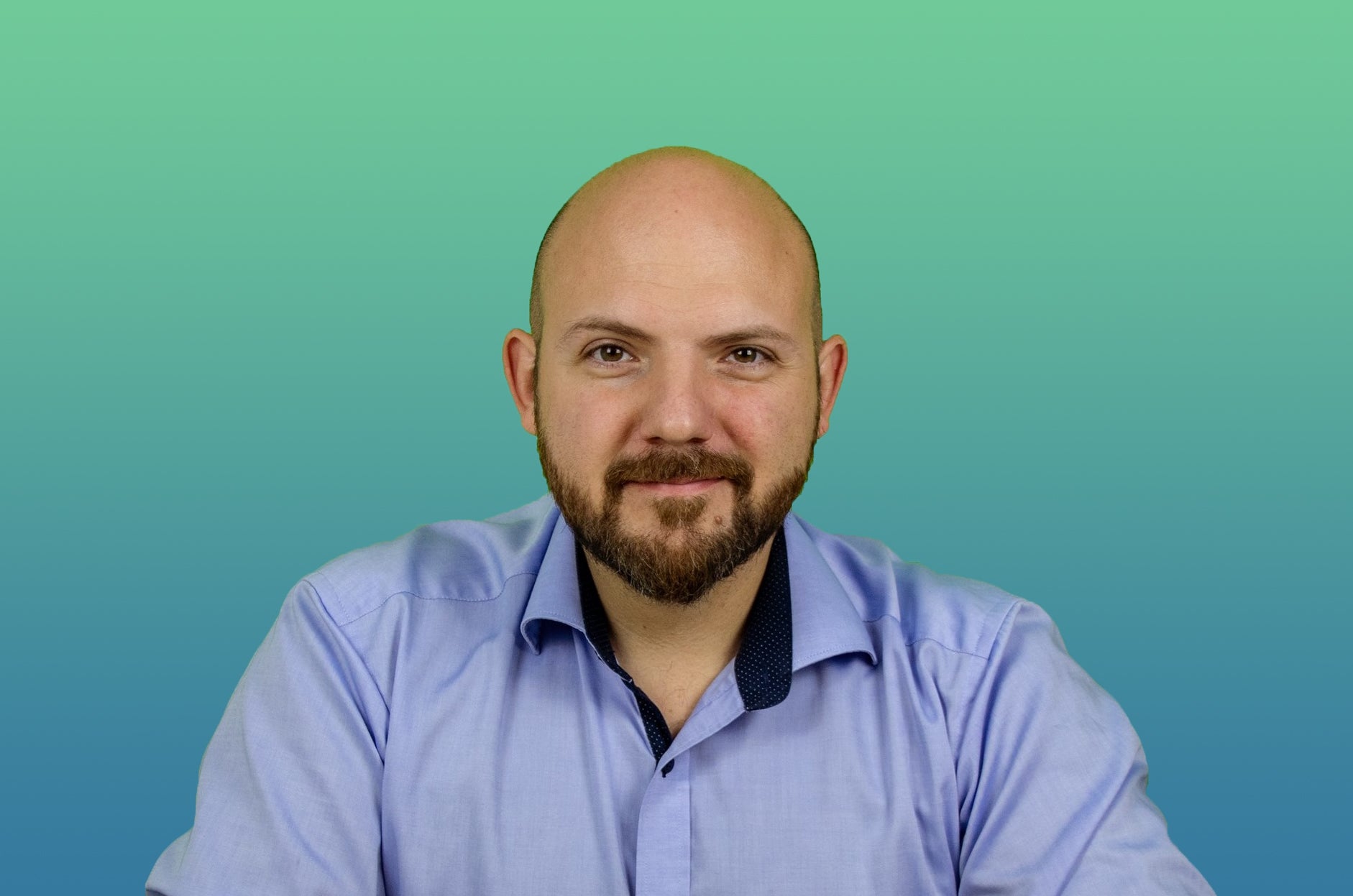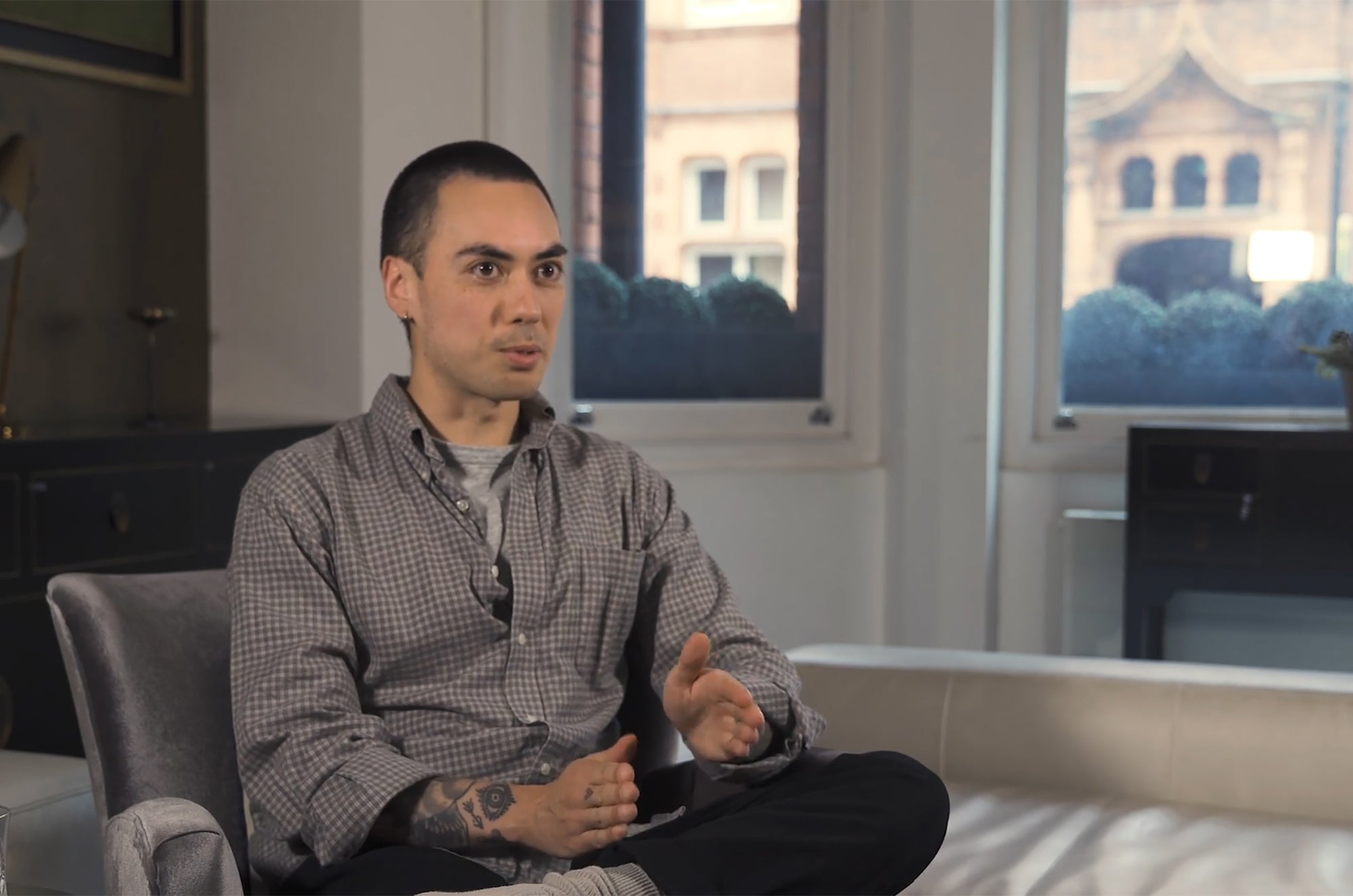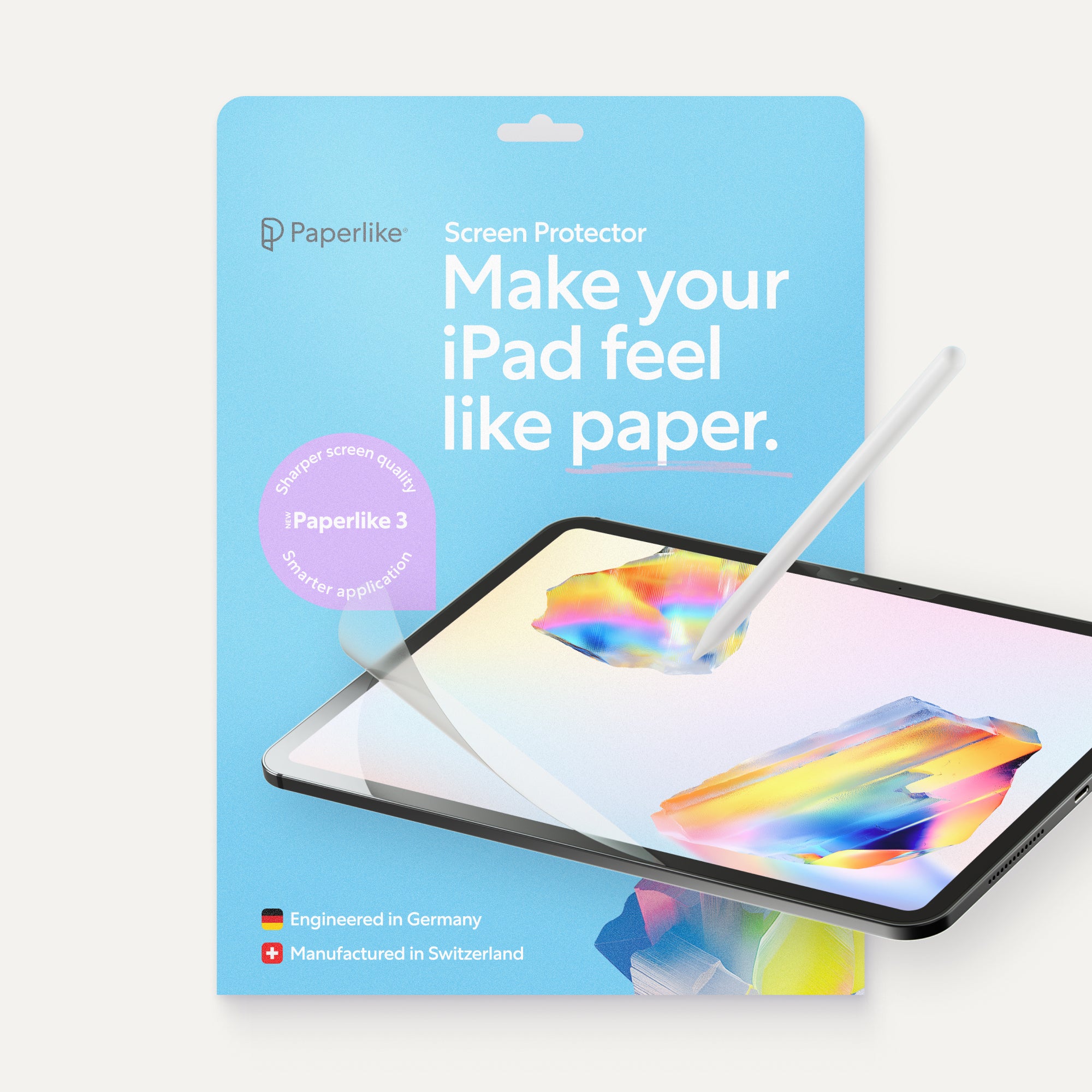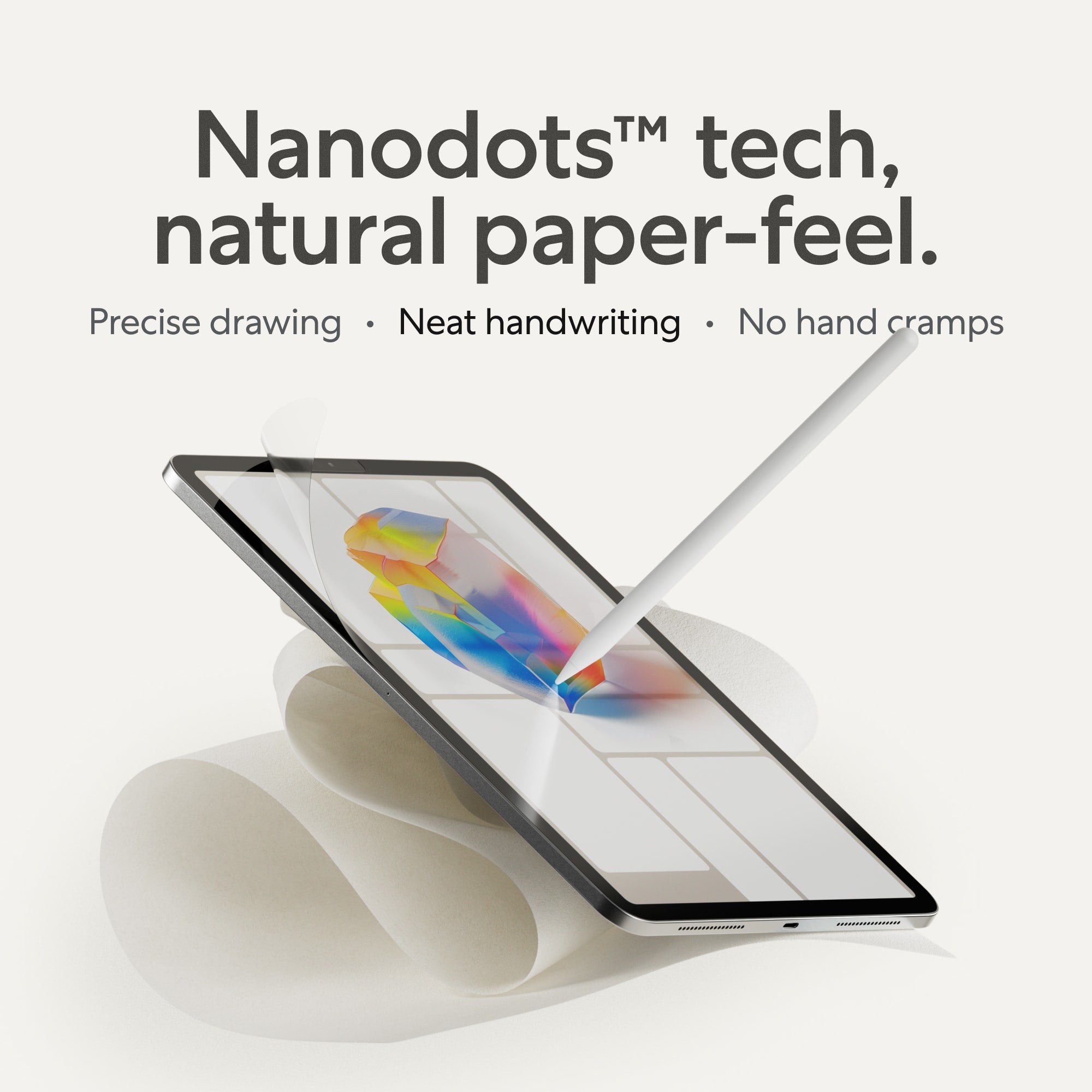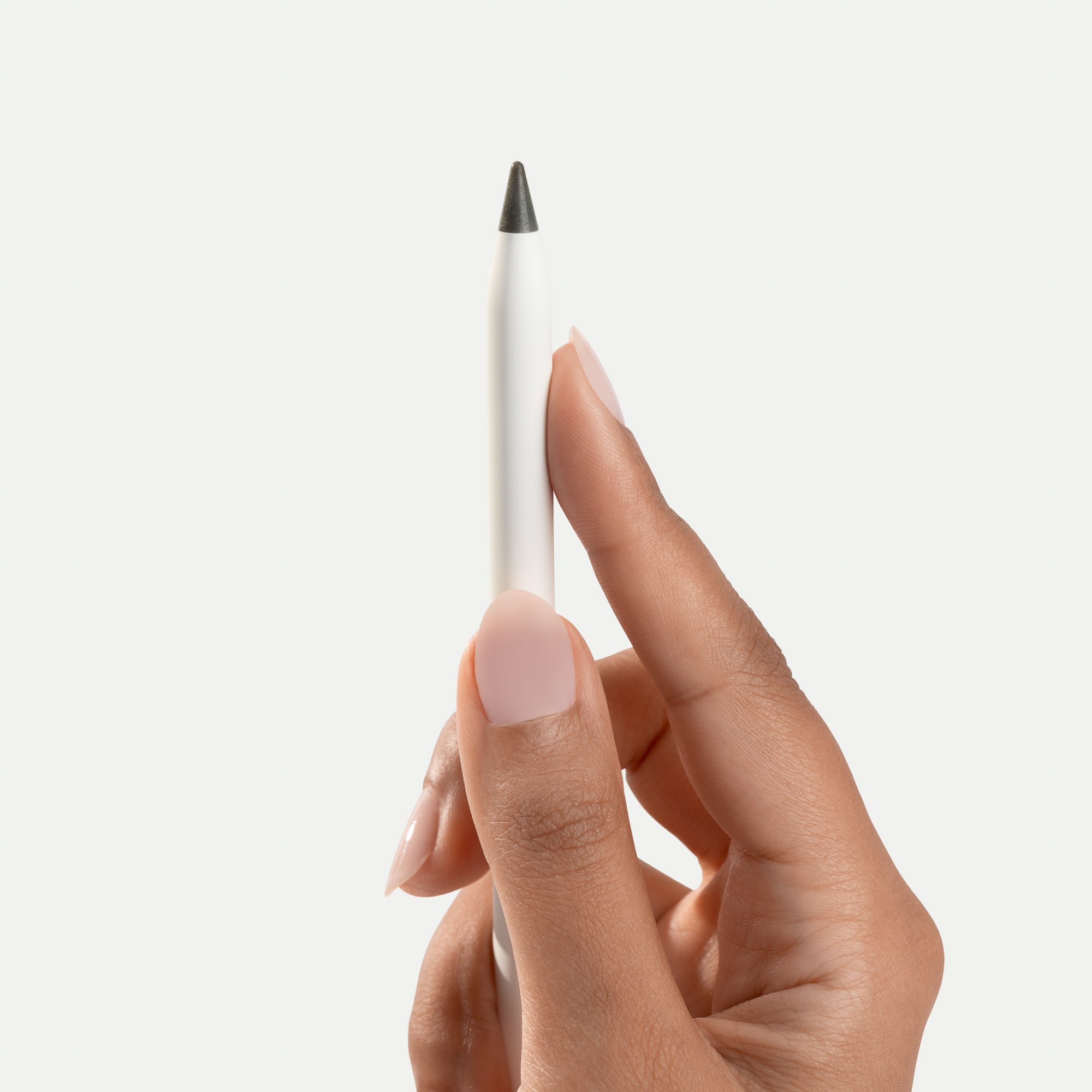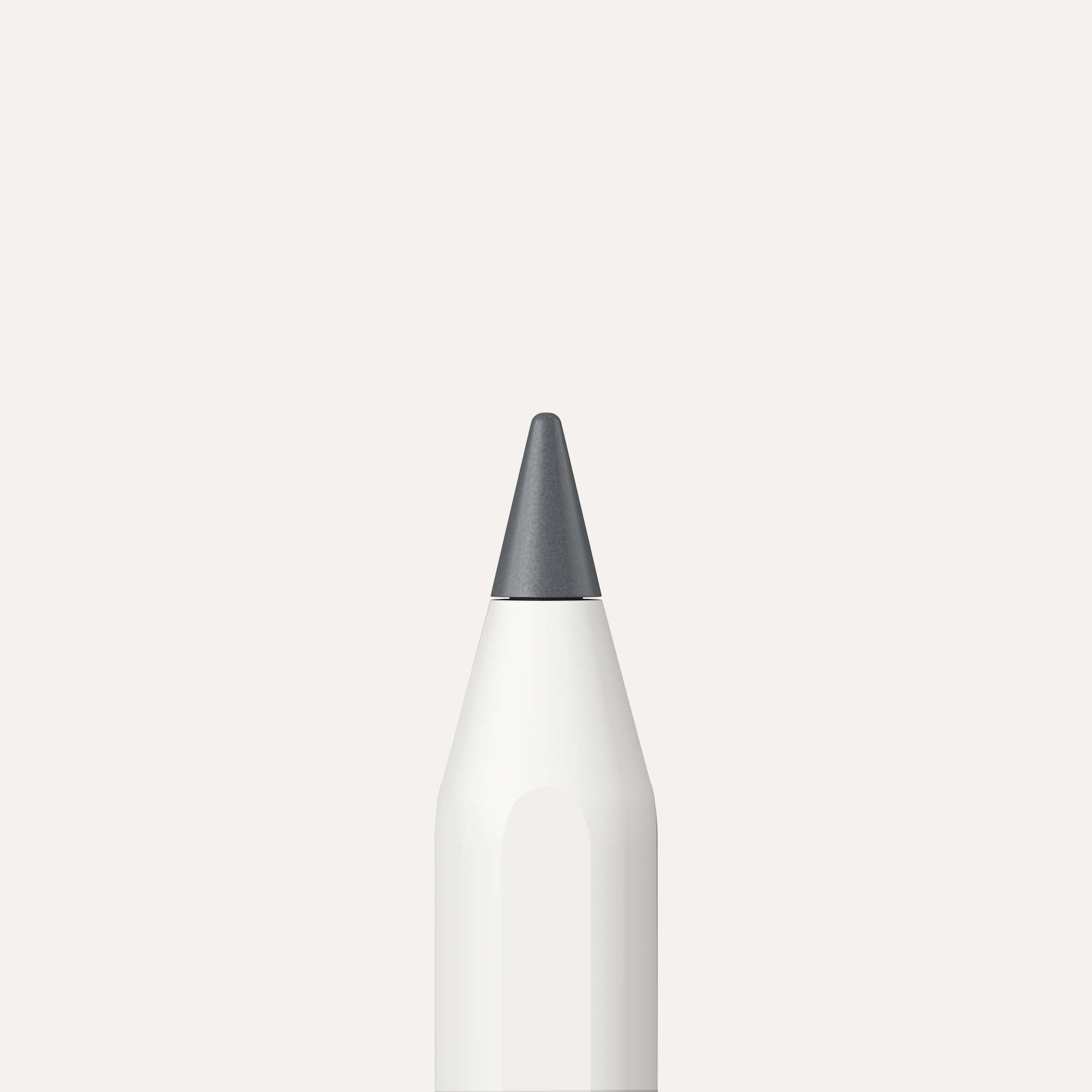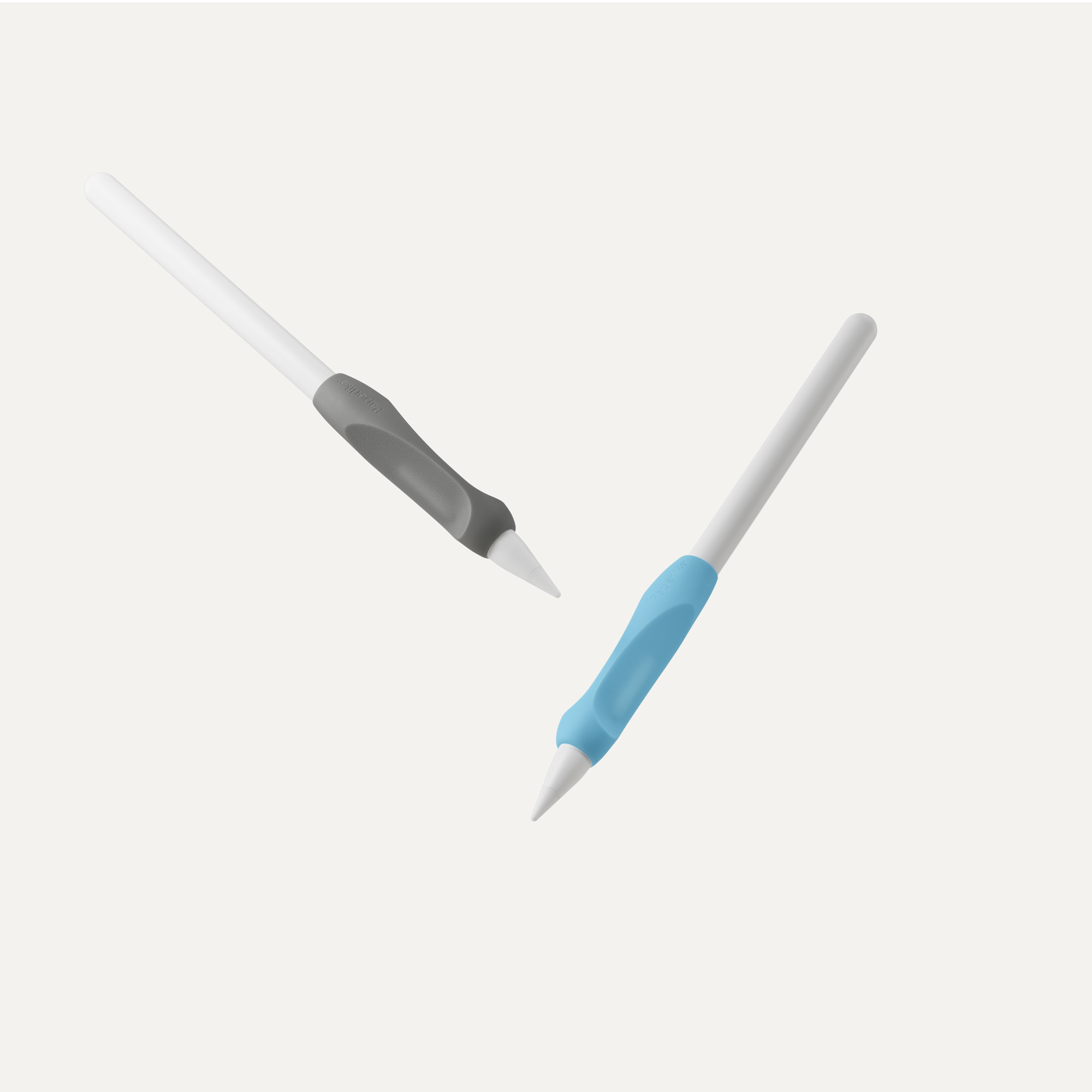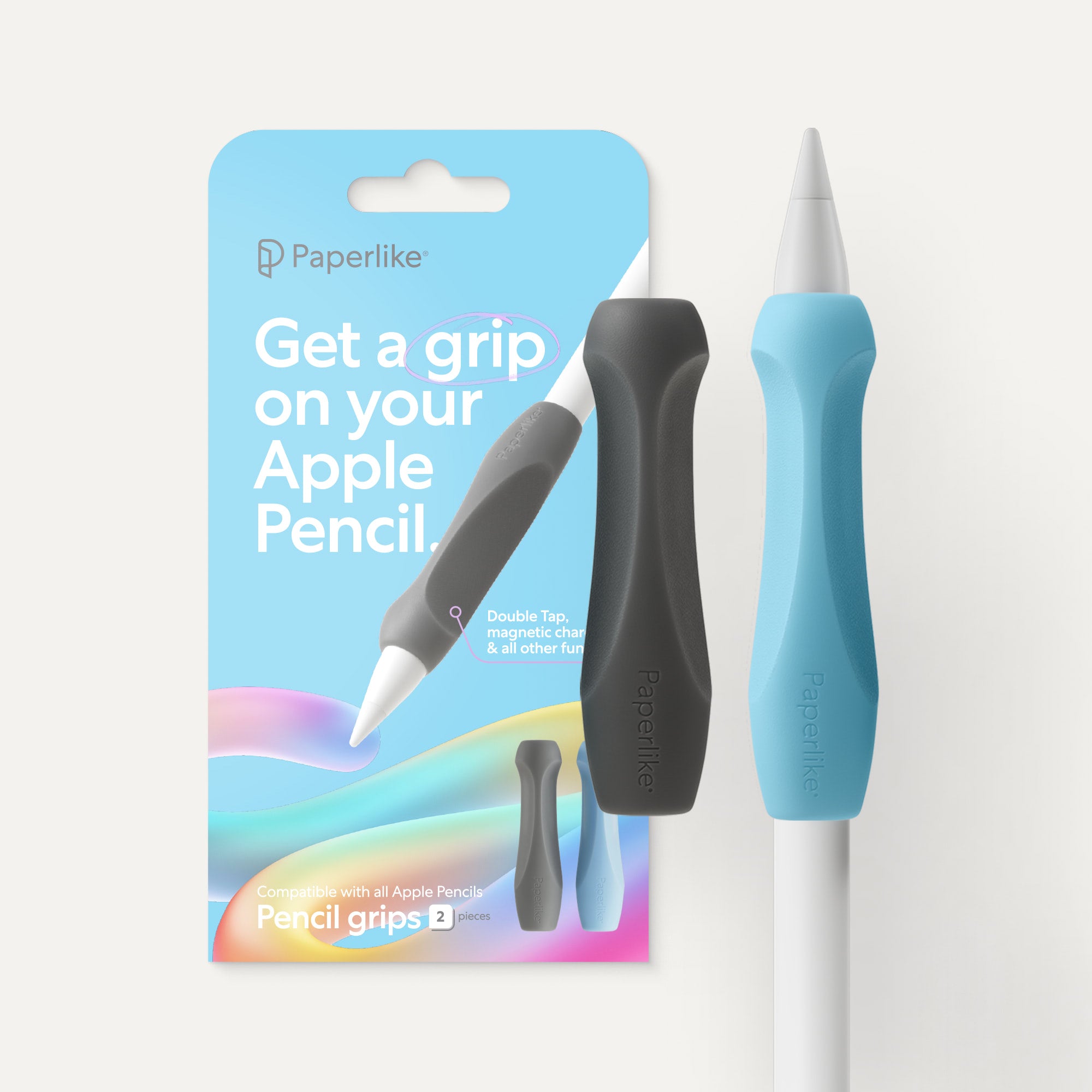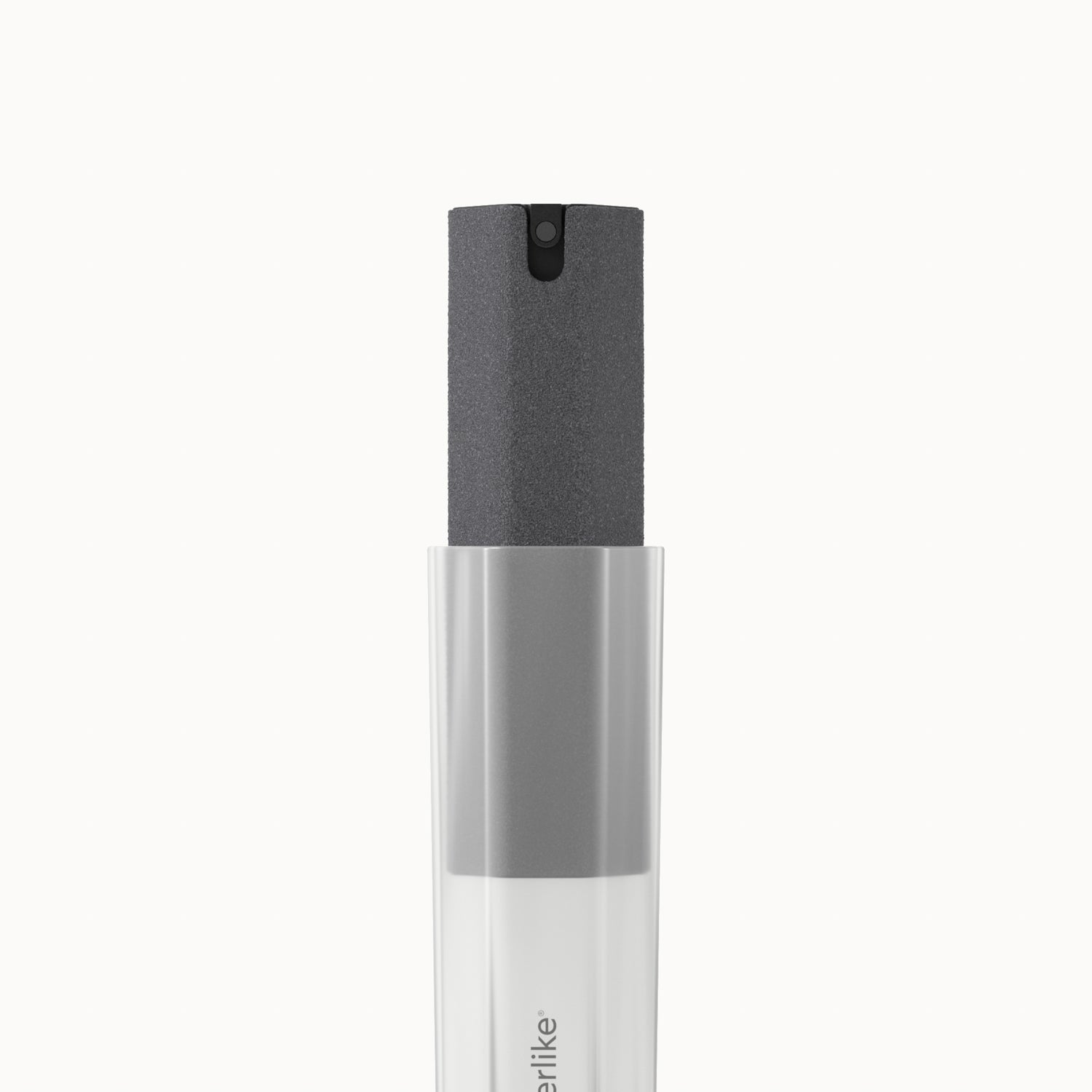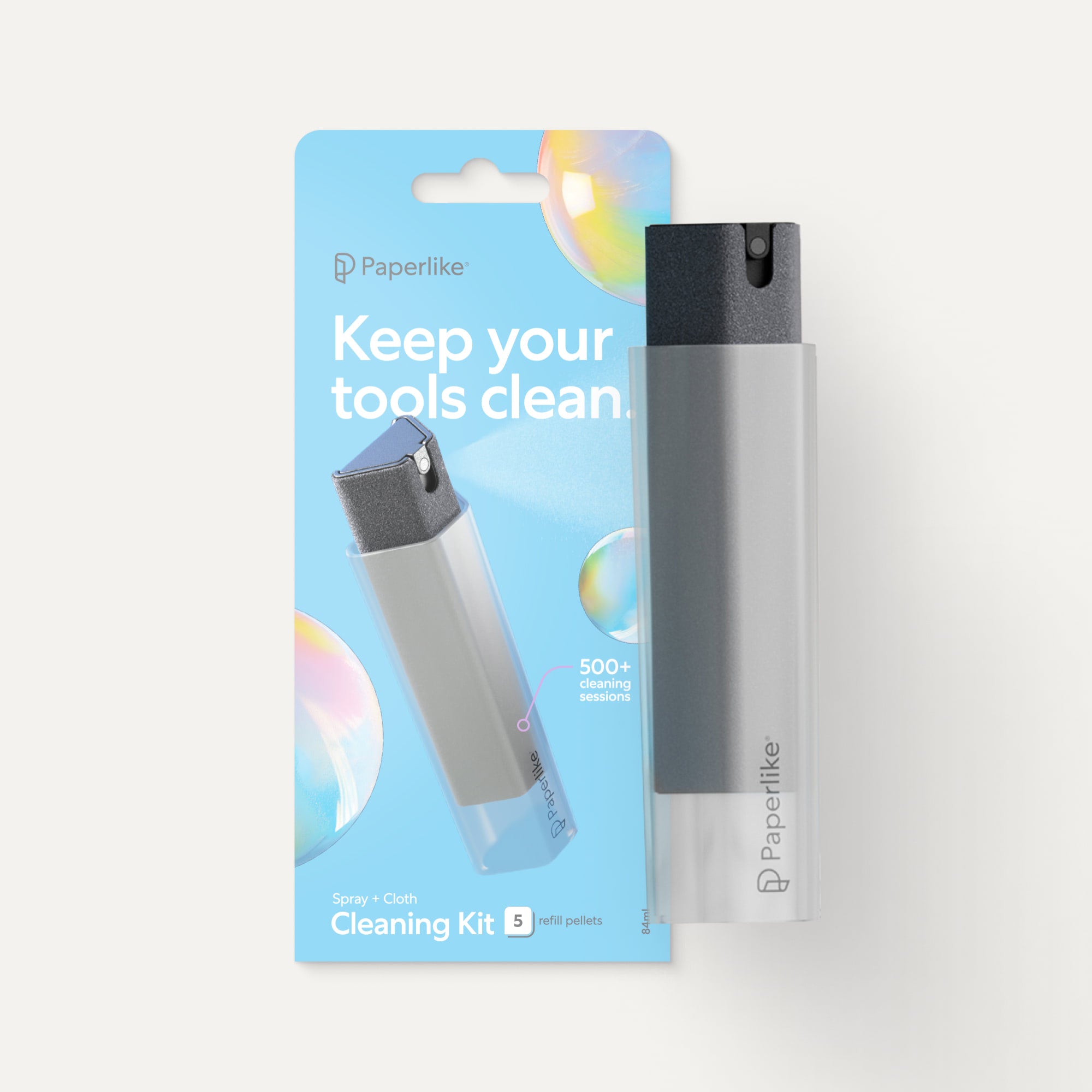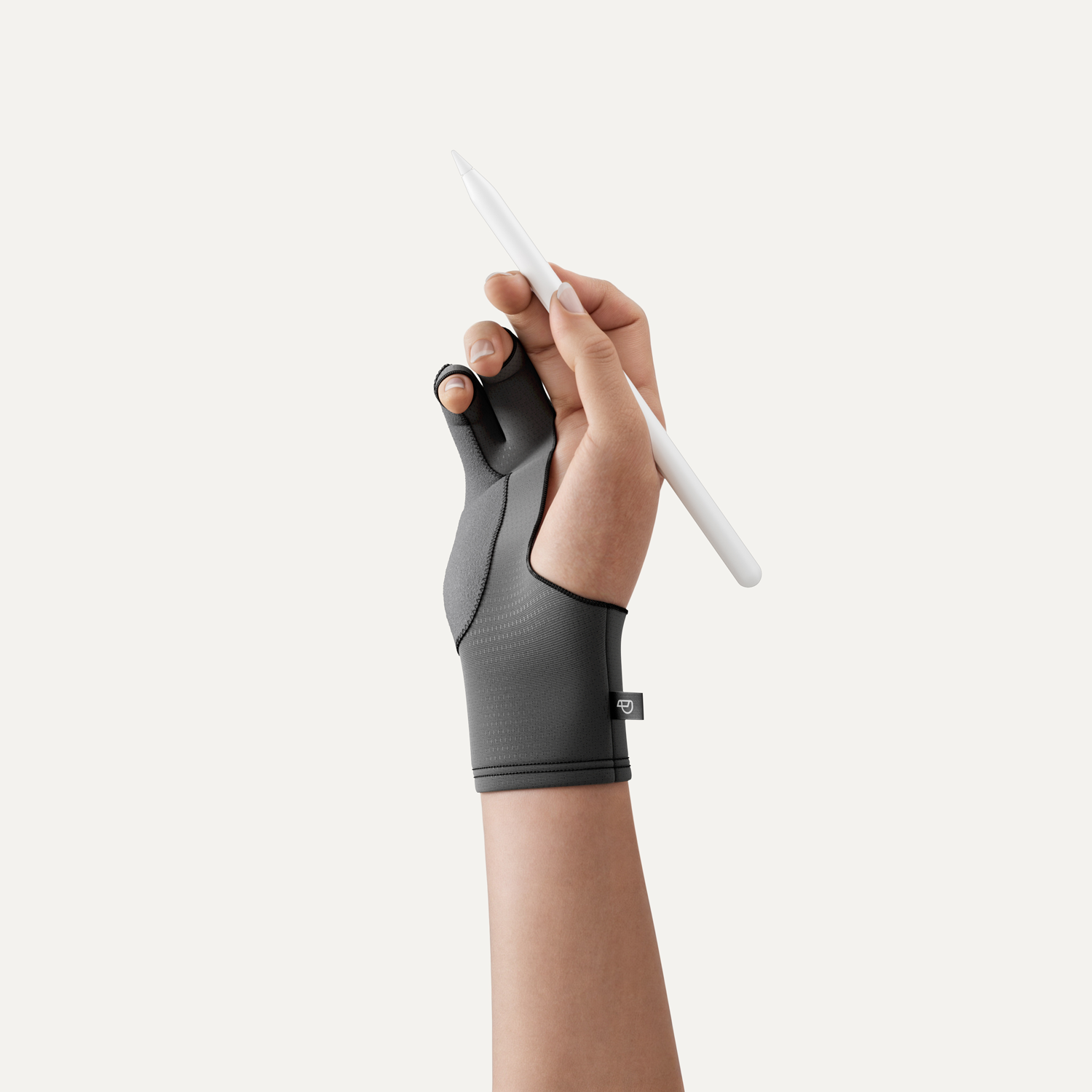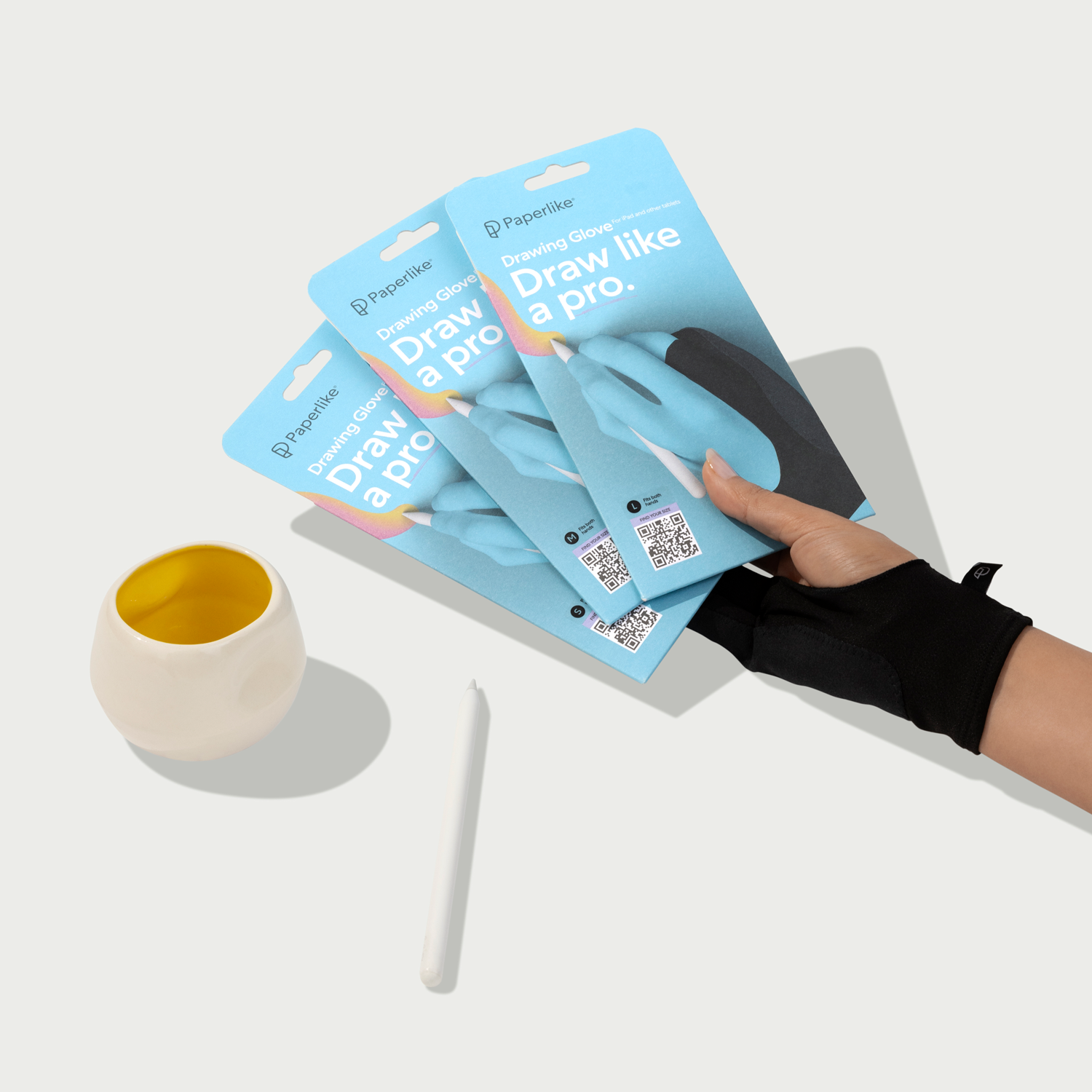In mid 2019, the Paperlike team set out to the UK to interview some of the most inspiring up-and-coming digital creators in London. These are the Paperlike Sessions. And in this session, we're talking with Sam Gwilt.
Sam Gwilt is an industrial designer for Precipice Design. Sam has a word or two of advice for would-be industrial designers. Here, he tells us what it's really like working at a design agency, plus the joys of inventing your own products.
Note: we encountered some unfortunate construction noise during this interview, which was impossible to remove. It starts about half-way through the video. Apologies in advance.
Transcript: Interview with Sam Gwilt from sam_does_design.
Sam
Yes. So my name is Sam. I am an industrial designer from London. I work just down the road. And I was born in the Midlands and moved over to London for university. And now I work at an industrial design consultancy called Precipice Design. And I also run an Instagram and YouTube page, Sam Does Design where I teach people about the design industry and what goes on behind the scenes as well.
I've been really lucky with my upbringing because one side of my family are mainly artists and the other side of my family are mainly engineers. And that means that between the two sides, that is pretty much where design fits anyway. So while I was growing up, I was surrounded by all this and I've being lucky enough to sit in the middle of the two. So I went to Brunel University in London on their design course and then that would have been about five years ago now. So well maybe six years ago. So yeah, so I went to university about six years ago, so I've been in London for about that time as well.
Paperlike
And how do you relate to your university course? Were you surprised or ... Because obviously like whenever you're 18 or 19 when you're going to university, you have this idea of what is it going to be like and then quite often I find it takes a slightly more like a different path. Did you experience that or?
Sam
I felt pretty relaxed at Brunel from the start and I felt like I chose that university because I felt at home there already, even from the interview day. I went to go and view a few other universities and I think they would have taken me a little bit more time to adjust and to get the vibe but Brunel was just ... I felt like I was home there. So the experiences I kind of got as I went through because it is taught kind of like it starts off being taught like a school with lectures and stuff, but then by the time you graduate it's taught more like the real world is anyway. So there's that natural progression. So I think that might be university specific. And I was just lucky in that aspect. But it kind of makes sense as I was going through it.
Paperlike
Yeah, no. Because I had a similar experience where like one was more university strict focused, one was more practical focused at the end. And I remember like appreciating that a lot. Because so often it happens where you're not prepared and it's not a good position to be in.
Sam
And that's kind of why I started Sam Does Design. Because as much as university can prepare you for the design world, first off, there are a lot of designers out there now that don't go to university and they're all self taught. And second off, even if you go to university, they can't prepare you fully for the real world.
So I started Sam Does Design to be like I'm now the guy on the inside relaying information back, kind of want to be like the spy in the industry that's like saying, this is how it really is and then giving that information back. So that's kind of why I started it to have this more transition phase and let people know how the industry works as well.
Paperlike
I guess when you've had a nice kind of road yourself, I mean don't get me wrong, it's probably come at a lot of hard work. I know that for sure, but when you've had this and things have gone well and you've learned a lot in like a soft environment maybe it lets you want to help other people, right?
Sam
Yeah.
Paperlike
So it's also nice whenever you have quite a lot of people that asked you if whenever you're doing your Sam Does Design, how did you get this and how did this happen for you? And they're maybe in a position where they haven't quite got there yet, but actually they're quite close. It's just that that moment hasn't arrived where they get it. It's like when you're like flat hunting or something, it feels like forever like you're searching and then one day you just have a place and it changes in a moment.
Sam
Yeah. Yeah. And that's true. I have been really lucky like you said, university is a great place to try things out and fail, and it's safe because in industry if you try a new product or a new method of making something and it doesn't work, then there's a lot of health and safety on the line. People's lives a lot of the time and cost as well. But at university you can try these things and fail with less repercussions. So yeah, that's to try and get people to make the switch and become comfortable doing that is cool as well.
Paperlike
So when you were studying or practicing to become kind of a designer, did you ever have any other career that you were close to following? I guess this is like the pre-university stage when you are still surrounded by maths and the sciences, did you were going to be a designer as you were getting to that point?
Sam
I would say yes because I had the choice. Like I said, I could've gone down the more engineering route. I could've gone down the more artistic route and I kind of split the difference and went for design because one, I've already done my maths and physics and stuff. So while I was learning them at school, it's good to have a base knowledge of it, but I really don't enjoy doing it.
And on the art side I find it a little bit too freeing, which sounds weird, but I really like the fact that design has engineering constraints, but you're not bound to the engineering numbers. And I really like working towards those constraints and pushing the boundaries with those. With the art side there's no constraints, which is great for some people, but I just really like to work to what I'm given in front of me. So it was kind of decided for me already, just from my interests anyway. So there was never really any other, not even some crazy, like other field of work that I wanted to go in it was always, I'm just going to carry on doing what I like.
Paperlike
Nice. And is there some moment that you would describe as kind of like your break, when it kind of started really happening for you? And is there a characteristic or value that you believe it helped define you in that moment?
Sam
I think a lot of the opportunities I've had over the past year or two have come from social media. And I would say my break in social media was I was posting stuff, sketches, stuff and renders and stuff on Instagram. And there is an American body school of teaching I guess, and they were called advance design sketching at the time and they had quite a big following. They were going around asking students for their insights and their aspects. They were going around and asking students about their ... I can't think of the word, experience gap.
So advanced design sketching were going around and asking students around the world about their experiences as a design student. They approached me and said, "Hey, we'd love to do a one minute, two minute video on you. And you just record what you think design sketching is to you." And at the time I was thinking, well, I've got deadlines coming up, I've got uni work coming up and I don't really want to spend time out of that. I gave it some thought and I thought actually this is like the opportunity, this is where I could make a difference to my social media presence.
And it was that change of thinking solely about university, but just thinking about things on a larger scale. I think I was in the right place at the right time, but it was that decision to make the switch. And I did the video for them. They posted it and already there was a bump in the community that I had. And then after that I was working with other people. That was my first online networking interaction and then it just snowballed after that. So I would say that was the first break. And I'm really grateful that I was in the right place at the right time.
Paperlike
And I'm going to skip off the piece to get a little bit, but so did you find at a point before that that you maybe find it more difficult to not be open but to actually kind of like feel that you are validated in giving advice per se? And then at some point you're kind of like, "Well no, but I have done a lot. There are people that know more than me, but there are of course people that also want to know what I think." Was there a moment where that kind of changed?
Sam
Yeah. Absolutely. That came in at a bit later. That didn't come for a long time actually because I started Instagram as a place to learn from others and I would post sketches and if you scroll through my page, you can see from the sketches at the very start, I'm not very good. So I was literally posting stuff saying like, "How can I improve this?" And I'm really trying to ask for help. And eventually after doing that for six, eight months, maybe a year, I was carrying on posting sketches but then people would start to ask me, "Oh, hey, how did you do that?" Or "How did you get this effect?"
And it took me a while to realize that actually there'd already been a switch and I hadn't realized. So then once I realized people were asking me how to do things, then it was like, "Okay, now I can tell them how to do it. And they're going to appreciate me sharing knowledge instead of me just saying how I do think that no one cares." So there was a definite change in mindset and that's when Sam Does Design changed more from my aspect, to try and grow as design, it still is that, but it became more about sharing what I've learned through the past as well.
In my day-to-day job as a designer, I use all the traditional softwares, like the Adobe Suite. I use a program called SolidWorks for modeling designs, and I use a program called KeyShot to render those designs. When I'm doing sketches, I will either be doing pen and paper for really rough, really rough, I would never show anyone these sketches apart from other designers doodles. And then if I want to take it into a more refined sketch, then I'll always use the iPad. I don't use any other media. I don't sketch in Photoshop or anything like that it's always the iPad.
And I think what's interesting is there are so many programs out there that can do different things and I'm starting to pick them up. So there's programs like Blender, which is another modeling software, but that has simulation and physics built in. So you can simulate smoke, steam, liquids and stuff like that and cloths. And that's really interesting as a visualizer like me to then not being bound by, I've made a square box in SolidWorks. That's the design versus now this design has a flowing shape and a simulated cloth and stuff like that, which is really cool as well. So it's bringing in these other programs that can help with that as well.
I obviously work in a big team. And when I'm doing stuff on my own, it's my own process and there are vast differences based on the size of the project as well. So we at work, we work with clients that are corporations and we work with huge companies working on products that can take 5, 10 years to come to market just because of the chain of events that need to happen to get that to market. So I'm a small cog in a big machine there, which is great to work in a team and as a team we're really impactful. How do I say it?
Which is great working as a team that we're really impactful on the way a business is run as a consultancy. But then when I'm working on my own projects, like the lamp for example, that is, it's more freeing for me and that takes me more to the artistic side, like I said. And it's got less than constraints and more about what I think it should be, which is really cool.
Paperlike
Can you tell us maybe a little bit about your lamp actually?
Sam
Yeah. So I designed a light with Gantri Designs. They are an American manufacturer and designer of 3D printed lamps. And it's made from a corn based polymer. So it's environmental friendly, but they collaborate with designers around the world and the designers to make that designs and Gantri takes care of the testing, the manufacturing, the marketing, the shipping and the customer satisfaction. They take care of all of that and it becomes a marketplace for designers around the world to sell their lamps.
So I worked with them on a light called Weight. And the idea behind Weight was I'm taking a solid ball of light and I wanted to make it look as if it had impacted on the base, on the cylinder. And the reason behind that is because 3D printing as a process is essentially taking a material and melting it and then extruding it into a shape. And I wanted to capture that process of melting material and make it look as if the lamp had stayed melted and then had been impacted with the orb of light. And that's why you see this crease because that's the impact side essentially.
I think for any creative trying to move to a big city like London, it's really tough. And figuring out, like after university you're kind of like in the world with no safety net anymore and figuring out where to live and who you live with and bills and stuff can be really boring. It's really tough as a creative to get those all secure because the creative industry is renounced for not being paid as well as it should be. So for the first six months of being an industrial creative in industry, it was really tough and making sure that paychecks caught up with the deposit that I had on a flat. There's so much money up front that you need to move to a big city like this.
So I have been really lucky for the fact that I've been able to do that. It's not for everyone and you don't need to be in a big city to be creative, but it's finding your feet for the first time. That was the trickiest bit. But that's more life advice. Life is hard.
Paperlike
I understand for sure. Because there is that thing where you're shoved into a world where you kind of almost need to be further than you are financially, but before where you are experience-wise. And you're kind of like trying to adjust somewhere in the middle.
Sam
Exactly.
Paperlike
I think you hit it on the head. And do you have like a special piece, something that is like particularly special to you?
Sam
I would say that the Gantri Weight light, that's my first design with my name on it. So that is the first one. When the box when it arrived for the first time in its final packaging and everything and it said Weight designed by Sam Gwilt, I've kept that box because that was really nice to see. I think that's the one. There are other projects that we worked on as a team, unfortunately, I can't even say our clients, they're all under disclosure but there are lots of products that I'm really proud of. The Weight is the one that I'm going to have forever.
Paperlike
What was that moment like when you received it? Do you remember it?
Sam
Yes. So I sat at my desk, back to the door and I know it was arriving on that day and we're constantly having mail delivered at my dad's at the office. So people going back and forth and that's fine. And then all of a sudden someone walks up behind me and they put the box there. I look at it and it's ... Yeah, I can remember looking down at it, picking it up. I got my phone out to put it on Instagram because I wanted to share that. I did a live session unboxing it for the first time. So it was really cool actually to unbox it, not only with the people at work, but with whoever was watching on Instagram as well in the live session and we were having a talk about it and stuff. And that was a special day. Yeah.
Paperlike
And do you ever feel like whenever you are capturing for social media, do you find it quite difficult to choose when and when not to? Because sometimes it's like you kind of want to enjoy a moment just for yourself, but you know that you can redo that moment.
Sam
Yeah. Yeah. I do feel like that sometimes. And if for example, if I'm going around a museum or if I'm going around a gallery or if I'm at a networking event, then I'm in the moment and I'm interacting with the world how it should be interacted with. I mean, I might just snap a photo or two, but then post them later on after the fact. But yeah, there is a definite switch between, now I'm here and now I'm sharing here. Yeah.
So yeah, I mean I've done a few lectures and talks at this point. I did a talk up in Sheffield and I've just done a lecture at Imperial College London yesterday, and when people stay behind after those lectures, just to say, "Hey, I appreciated the time." Or "I thought it was really interesting." That is why I do it. That is why I spent so much time with all this effort that I'm doing online and going to the different events because I want to help people. So the fact that they just expressed saying, "It helped." That's like tick the box, that's perfect. Like I've done my job. So that's pretty cool.
Paperlike
And did you ever expect to go into that sort of teaching capacity? Did you ever see that before you?
Sam
No, I mean I've always enjoyed talking to people and I guess, I've always enjoyed presenting stuff, if ever we have a presentation, because I really like if I really believe in something, I think I can talk about it forever. I can just carry on. And there was a lot of times at university when there was projects I didn't believe it and I didn't believe in what I'd done. And it really showed when I gave the presentation at the end, it was awful and I hated it. And I kind of said to myself, "I'm going to get better at that. I'm going to get better at presenting and I'm thinking I'm going to get better at believing in what I've done." That's kind of where it snowballed again.
So it's a cross between making sure I fully believe in what I'm saying and making sure that I'm helping other people as well. And between the two that has drawn me into the teaching and lecturing stage as well. So that kind of ticks both boxes. So it's really cool.
Going to university to study design or art or anything creative, I think if I ask certain people in the industry now they would say that's the formality that you need to do so we know that you can do it and we can employ you. I wouldn't agree with that. And I can see on the online community there are so many freelance or employing people at companies that didn't go to university and they're all self taught. So I would say the piece of advice I heard for going to university and going into higher education, I don't think it's necessarily for everyone. And I don't think you're at a disadvantage if you don't do it either.
Paperlike
Yeah. Because it's not so much that you work in a job with it. It's more just that your career path will maybe be a different style of learning.
Sam
Yeah. Yeah. Yeah. So instead of learning things in a classroom formally you can go and learn things out in the real world. You can take on freelance work, you can do personal projects and gain that experience in a different way and then you kind of come in through a different door, but you still get employed later on down the line as well.
There were so many tutorials online for learning about specific skills, but you just need to know what skills you're looking for. So YouTube tutorials on sketching, photography, rendering, all that good stuff, they're out there and they're free. If you want to start picking up pen and paper they're close to free, a Bic or Biro, that's all you need to get going in design sketching, so they're free or relatively free.
The next step up from that in terms of skill base is either an online course specifically for that skill and there were paid courses out there. But also I think a better use of time would be to go to a networking event or to go to a design Biennale or Milan Design Week. That's a lot of money to go to, but to get that experience and see what other people are doing, see what is going on in the industry, I think really helps as well. So that's quite a big step up. Free YouTube, nearly free pen paper, or go to Milan Design Week. That's big difference. But just get out there in the real world, get out there and get inspired and just surround yourself in the world that you want to be part of. I think that's ...
Paperlike
Yeah, nice. Yeah.
Sam
Cool. So up next for me, I am hoping to give more talks, hoping to connect more with people in the real world, not just online. But online I'm actually working on a YouTube series called Design In Process. And I'm starting from scratch and designing the products all the way through to manufacturer at the end, and I'm documenting that whole process. So people can jump on and watch that as I go along.
If you want to find me online, you can find me at: sam_does_design on Instagram, sam_does_design on YouTube, sam_does_design on Twitter, and samdoes.design on my website.
Paperlike
Amazing. Thank you very much.
Sam
Thank you so much.



